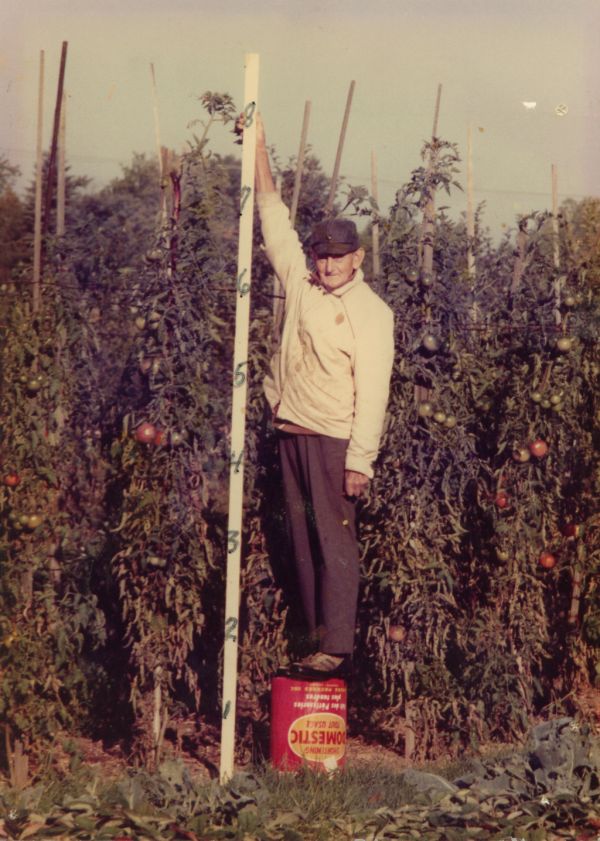

I have gardened in Saint-Didace for over thirty years. In 1980, my wife Diane and I established our first garden into which we transplanted a dozen tomato plants. Since then, I’ve experimented continuously with growing tomato cultivars, researching those best suited to the organic methods that we practice: those that are early, productive, most resistant to sickness and disease, and – most of all – those with the tastiest fruit.
In my quest for the perfect tomato, I met a Cleric of St. Viateur - Brother Armand Savignac - in 1985. Given a terminal sentence by the medical professionals at the age of 42, he left teaching to devote himself full-time to gardening in order to feed his community. He began a composting project with Alphonse Dufresne of Saint-Félix-de-Valois and met Alphonse’s brother Raymond, who gave him the seeds of a pink tomato which Armand planted the following year. He was so impressed by the vigorous production and succulence of the fruit harvested, that he abandoned all the other cultivars he had been experimenting with and devoted himself exclusively to the cultivation of the tomato he called the Dufresne to honor of the man who had given him the seeds.

By contrast, my quest for a red tomato lasted more than thirty years. I had to experiment at least 100 cultivars, none of which really satisfied me. If the taste was satisfactory, the fruit cracked or was too sensitive to Alternaria. If the plant was vigorous and productive, the fruit flavor was bland. My quest was completed last year, however, when I tried the tomato "Mother" whose seeds were given to me by David Neufeld, a Manitoba Mennonite I met at a Food Security Conference here in Montreal.
I experimented for the first time in 2011 was impressed with the flavor, earliness and resistance to diseases. I kept the seeds have grew 12 plants last year to produce seed. To learn the history of this cultivar which closes to some degree my quest for a satisfactory red tomato, I wrote asking David about its origins.
In his village of Boissevain, Manitoba, the Mennonite sisters Mary and Agnes Dyck lived together. Both women worked as nurses in the small village hospital and grew a huge garden in their backyard. Mary Dyck died a few years ago and Agnes – who has now reached the venerable age of 90 years - had to leave her home. Before leaving her garden, she gave David some tomato seeds so they could be multiplied and given to anyone interested in growing them. She then said she had received the seeds of this tomato from her mother, who had obtained them from a Ukrainian immigrant upon her arrival in Winnipeg. Since the seeds came from her mother, she has always called "Mother." This history doesn’t say whether the Ukrainian in question was Mennonite, but it is worth remembering that this community had lived in the Ukraine for 150 years before being expelled by Stalin in 1920, which explains their strong presence in the West Canada, where many of their members have emigrated.
Thus, this heady red tomato called "Mother," originating in the Andes like all others, had won Europe with the Spaniards, travelling to Ukraine, from where she migrated to Manitoba around 1920 before reaching Jardins du Grand-Portage in 2011. We are very pleased to offer it to our customers for the first time this year.
~Article by Yves Gagnon, Jardins du Grand-Portage